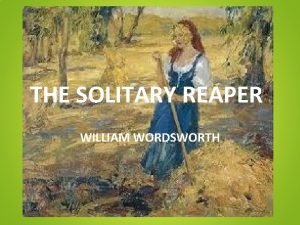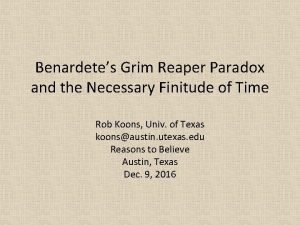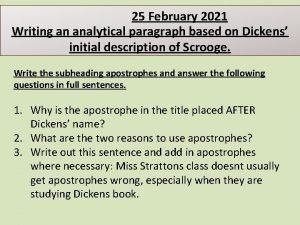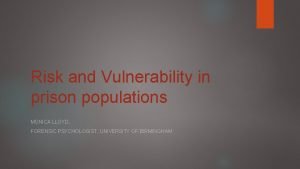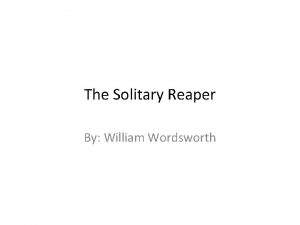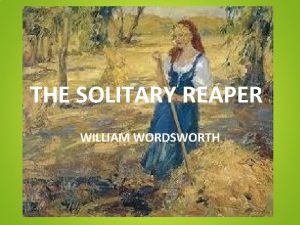The Solitary Reaper W Wordsworth It is a





- Slides: 5

“The Solitary Reaper” W. Wordsworth It is a short lyrical ballad , composed of 32 lines and divided into four stanzas. As the title suggests, the poem is about one figure, a Highland girl standing alone in a field harvesting grain. The poem is written in the first person and can be classified as a pastoral or literary work describing a scene from the country life. We are given the impression that the poet did not merely imagine the scene but actually lived it. The image of a Scottish girl reaping alone and singing a melancholy song was suggested by an experience of his own during his visit to the Scottish Highlands in 1803 and by a description of a reaper in Tour of Scotland by Wilkinson.

Analysis The poem opens with the speaker directing our attention to a solitary reaper. She is singing in a field somewhere. She is a Highland lass singing and reaping at the same time. It is a kind of sad song but it is definitely more thrilling than a cuckoo’s song in the Hebrides and different than anything one might hear from a nightingale. The speaker loves the song but he can not understand any of it. He wonders whether she is singing about old battles and other sad stuff from forever ago , or she is singing about something more humble. Either way , the speaker keeps watching , enraptured and is motionless still. At the end , he quietly walks away , keeping the reaper’s music in his heart for a long time after. •

The First Stanza The poem begins with the speaker asking readers to behold a young girl reaping and singing by herself in a field. The song the girl sings is a sad song. The speaker says that anyone, who passes this girl by , should either stop and listen or “gently pass” so as not to disturb her. He is so struck by her song that the whole valley seems to overflow with its sound. • •

The Second stanza The speaker compares the girl’s song to that of a nightingale and a cuckoo bird. He says that her song is more welcome than a nightingale might sing to a weary traveller in a desert and her voice is more thrilling to hear than a cuckoo bird in spring. He is utterly enchanted although we learn in the next stanza that he can not understand the language of the song and so he can not say what the song is about. •

The Third & Fourth stanzas The speaker tries to imagine what the song might be about. Given its sad • tune , he speculates that the song might be about some past sorrow , pain or loss “ of unhappy things and battles long ago “. Or perhaps , he says , it is a humbler , simpler song about some present sorrow , pain or loss , a “ matter of today “. The poem ends as the speaker realizes that whatever the girl sings about does not matter. It is the beauty of the reaper’s voice that touches his heart and lingers in his mind. It gives him joy as he travels up the hill and carries her song with him long after he can no
